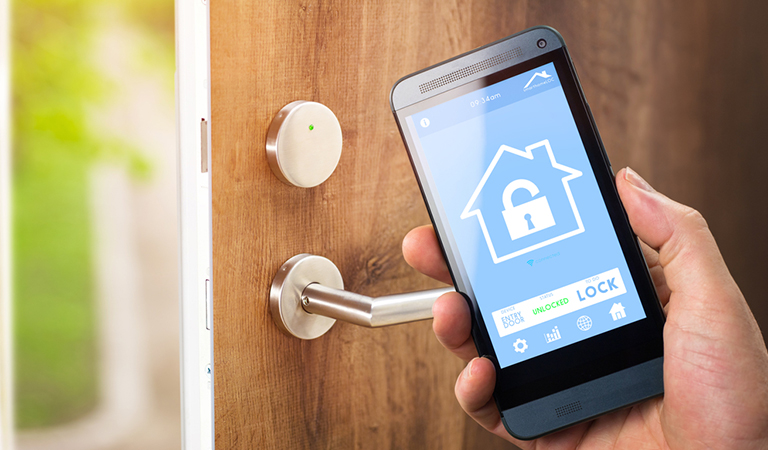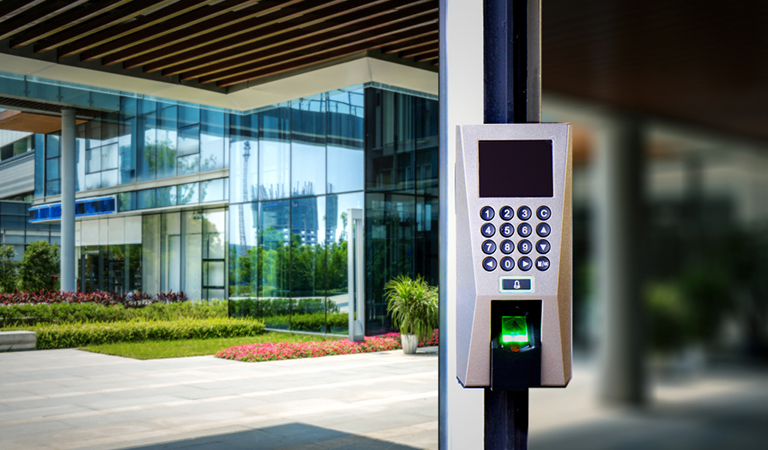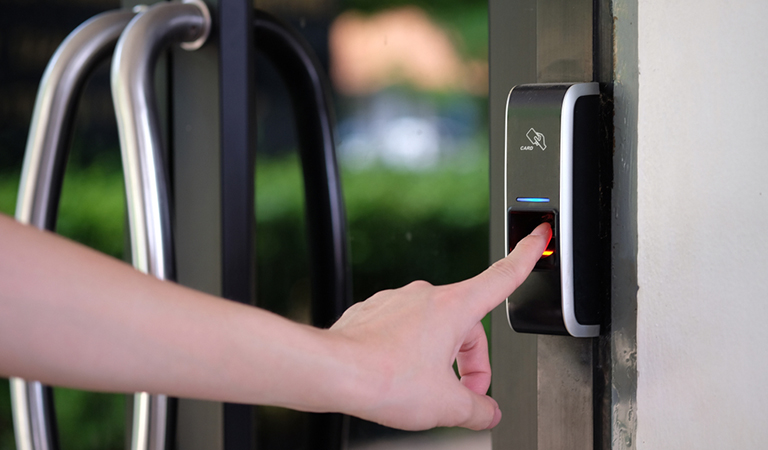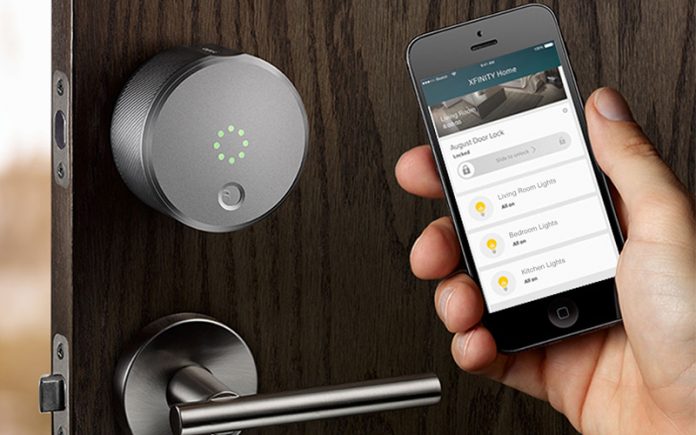Due to the need of added security, people from all corners of the world are now switching from the traditional door locks to the modern keyless locks, like fingerprint keypad door locks and even fingerprint safe boxes. There are many reasons behind this transformation occurring worldwide. However, although electronic locks are able to offer greater security and convenience, there are some myths surrounding them; making many more hesitant to adopt these excellent options.
Common Myths About Keyless Locks

Myth 1: Keyless locks don’t work during a power outage
This is not true because most electronic locks run on batteries that can power them for as long as two years. They also have inbuilt power sensors whose job is to warn the homeowners of the battery drainage a few weeks before the occurrence. This gives the homeowners enough time for replacing the batteries. Some keypad door locks come with the key override system too.
Myth 2: Electronic locks are hard to use and too technical
Many homeowners are unwilling to embrace new technologies because they prefer more traditional methods. For them, smart locks like fingerprint keypad door locks are too technical and too hard to use despite their numerous advantages. But the key makers are always concerned about this matter and they work hard to make the user experience as simpler as possible.
Myth 3: Traditional locks are more durable than keyless locks
Well, this was true a few decades ago, but not anymore. Due to the technological advancements, keyless locks, as well as fingerprint safe boxes, are now stronger and more durable like never before. You would even find keypad door locks that are weatherproof and can work in very high and low temperatures. They also don’t go through so many frictions like the traditional locks, making them last much longer.
Myth 4: Electronic locks are always wired
Since these locks are battery-powered, no wiring is involved in their mechanism. You can easily install following the instruction manual. The process usually involves just snapping your lock in place and installing the batteries. There may also be a backup entry process that you have to follow in case you’re unable to get your access for some reason.
Myth 5: Keyless locks are not so easy on the eyes
When it’s about aesthetic appeal, keyless locks don’t lag behind these days. In fact, there are so many models and designs available that can complement the theme of any home décor. Whether you prefer a simple, classy theme or a luxury décor, you won’t have to worry about giving up on a beautiful design for added home security.
Myth 6: Keyed locks are way more reliable than keyless locks
This is a common question that arises among many users when opting for smart locks: Are smart locks safe? In terms of reliability, keyless door locks are always one step ahead of keyed door locks like padlocks or deadbolts. With a fingerprint lock installed in your entrance door, there is no reason for you to fret about losing your house key or leaving your home keeping the key inside. Some even have a security feature that warns you when an intruder tries to break into your house putting wrong passwords or breaking the door/lock.
Myth 7: Electronic locks can be hacked easily
In movies, we often see actors and actresses using different electrical equipment to pass through electronic locks, giving us the misconception that hacking these digital locks is just a breeze. But, in reality, they provide the topmost level of security and protection. In order to break such a technologically advanced lock, the hacker has to physically access its internal components to input their own codes, which is practically impossible because keyless locks have a tough build since they are made of durable materials.
Keypad Lock Troubleshooting Guide

It is important for you to remember that most electronic lock issues occur due to poor battery conditions. When the batteries drain out, the lock does not get enough power to function properly and hence, many issues arrive. As soon as you find any issues with your keyless door lock, always check its batteries first.
When you’ve changed the batteries but you notice that your lock is still not functioning, only then consider the following factors.
Problem 1: You hear no sound or see no light when you press the keys.
Possible reason(s): Your lock has not enough battery power to work well
Solution: First disconnect the batteries and then reconnect. If the problem still exists, replace them with new ones.
Problem 2: The lock does not open every time you use the right password combination
Possible reason(s): The connection between the lock and the keypad, or between the keypad or batteries is disrupted; or the keypad is not working at all
Solution: Replace the keypad
Problem 3: Your lock beeps quickly several times when you press the first number
Possible reason(s): The lock is probably in the “lock out” mode
Solution: Wait for 15 minutes and then carefully enter the correct password. If you enter a wrong combination then this issue will occur again
Problem 4: It seems like the lock is working properly but the door won’t open
Possible reason(s): Low battery power, loose bolts, poor/slow connection between the lock and the keypad.
Solution: Move the handle to its full locked position and then enter your password again.
Problem 5: How to change your code on the keypad door lock?
Possible reason(s): At times, you would want to change the code on your keypad door lock whether it’s for safety purposes or because you’ve forgotten about it.
Solution: Most of the keypad door locks will come with a master code that you have to enter before setting your actual door code. Inputting that code will allow you to change the key for the door lock. It’s better to look for an alternative method on the manufacturer website or the user manual if you’ve forgotten the master code and/or if it doesn’t have a master code. There will always be a failsafe for your device.
Fingerprint Safe Lock

Wireless and keyless locks are great options not only for securing your house and door, but they also make for great safety measures for a safe life. Instead of using combination locks or keys, you can secure your documents and/or precious possessions inside a safe using just your thumb. In fact, fingerprint locks are now being used increasingly for safety deposit boxes and safes for both commercial and home use.
The benefits of having a fingerprint-secured lock for your safe will ensure that a safecracker will neither be able to crack any combination code nor can anyone lockpick your safe. It can only be opened using the biometric system and your fingerprint. But as with everything else in the world, even fingerprint locks have some drawbacks of their own. According to a test done by Mythbusters, bypassing a fingerprint lock isn’t that difficult if the intruder is able to get his/her hands on your fingerprint. Even then, your average burglar isn’t supposed to come to your house, equipped with a forensic fingerprint dusting kit and the other large equipment they need to create a fake replica of your fingerprint. So, you can be certain that your safe will keep things safe from the small-time burglars if you just get yourself a fingerprint safe box.
To conclude, keyless locks are a safe and secure way to ensure yours as well as your family’s safety. You may have to spend a bit more on a top-notch touchscreen door lock or a fingerprint safe lock for your safe, than for the traditional locks. However, that extra amount will make up for itself in forms of the added security you will enjoy over a long period of time with the fingerprint scanner door lock. So, there is no reason why anyone who is very much concerned about their safety should not try a keyless lock.










































